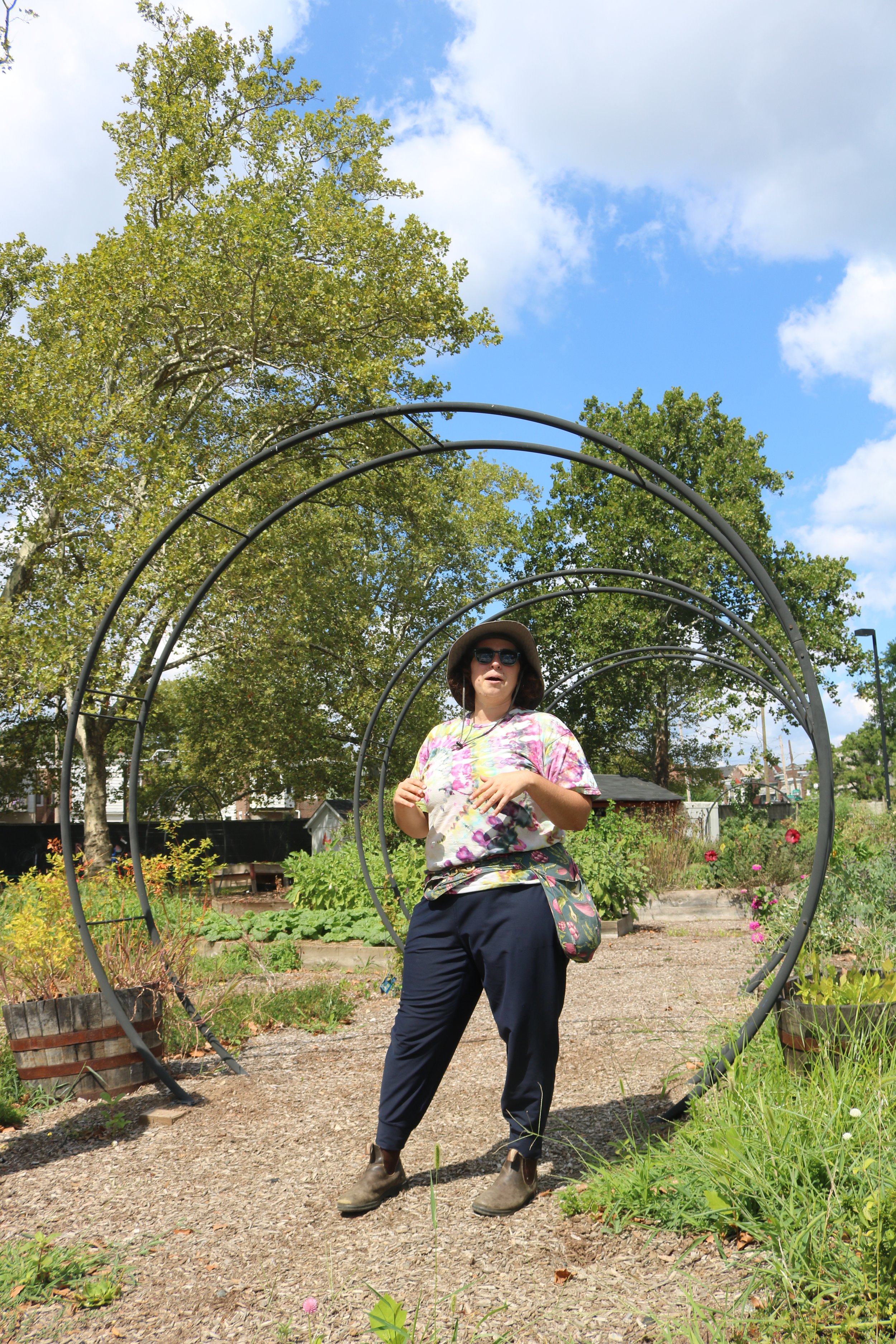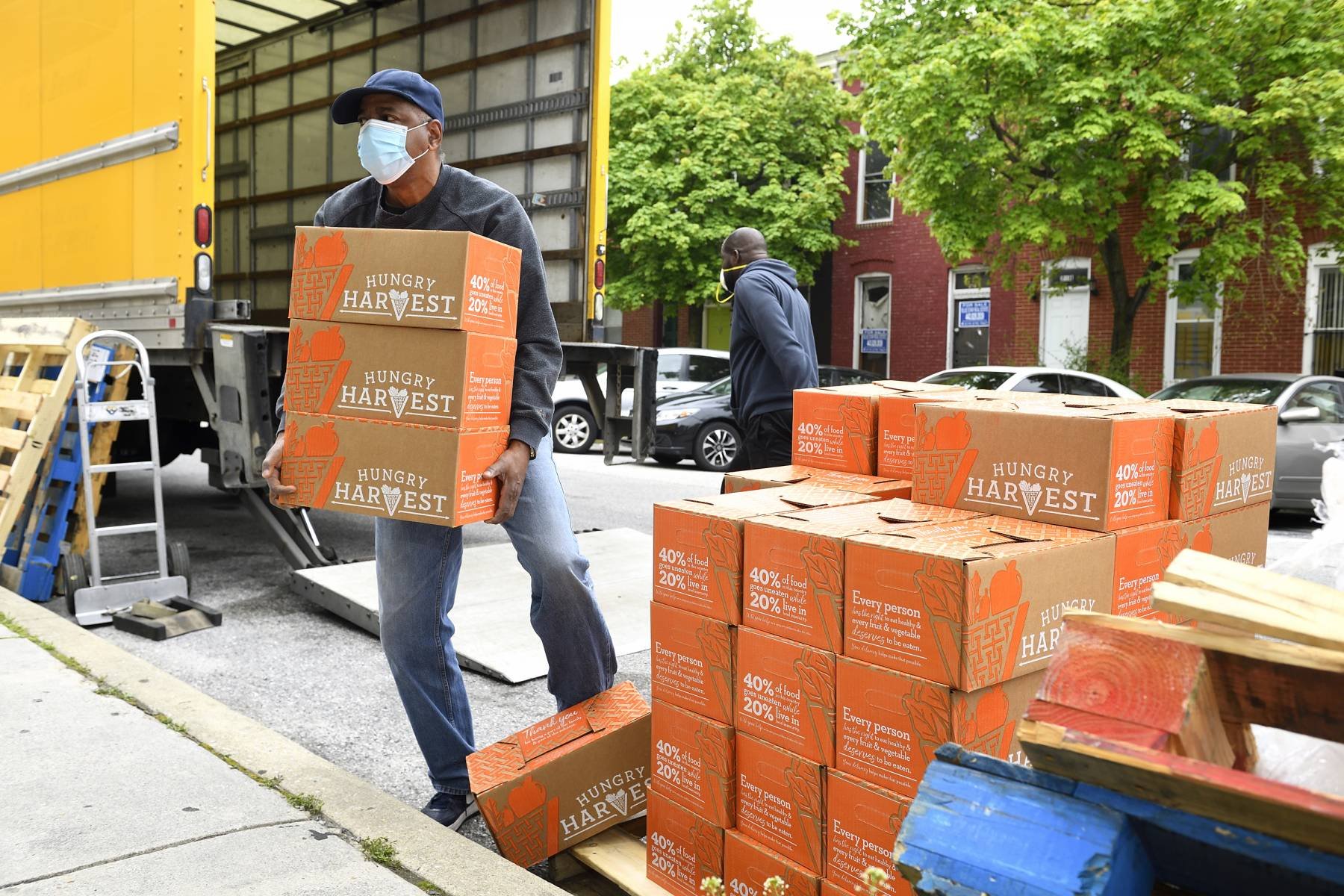
2023 IMPACT REPORT
Healthy Kids
•
Healthy Places
•
Healthy Futures
•
Healthy Kids • Healthy Places • Healthy Futures •
$4.6M
Commitment
40
Children’s Hospitals
14
States Included
“We’re here to increase access to fruits and vegetables in the neighborhood and support our nutrition programming. But the involvement of these young people in our work is the really important thing,” Murray said. “That's what makes a real difference.”
NewYork-Presbyterian, New York.
New York Hospitals Connect Kids with Healthy Food
New York-Presbyterian Hospital, Mount Sinai Benefit from Connecting Communities Grant
Standing amid the stunning vegetation of the Brooklyn Grange, a 3.5-acre rooftop farm overlooking the skyscrapers of downtown Manhattan, Gloria Lopez couldn’t help but pull out her phone.
“I was taking a lot of selfies that day with the beautiful flowers on the roof,” Lopez said.
Besides making for a great photo backdrop, the visit to the rooftop farm provided a real-world glimpse of the agricultural world that can be found amid the steel and concrete of the United States’ largest city.
Lopez found herself there thanks to the Youth Market at New York-Presbyterian Hospital, which provides paid summer internships for young people interested in public health, health care and nutrition. Interns run community farm stands, facilitate nutrition workshops, help with food distributions and more.
Rite Aid Healthy Futures supports New York-Presbyterian and 39 other children’s hospitals across the country through its Connecting Communities signature initiative. Launched in 2021, the grant program supports major institutions that have found innovative ways to connect their communities with resources that kids need to thrive.
To date, Connecting Communities funding has focused on food-related programs. Grants support everything from food screenings to urban agriculture programs to disease prevention programs centered on good nutrition and more. As anchor institutions and key medical providers, children’s hospitals provide a critical connection point between Healthy Futures and the neighborhoods it aims to uplift each day.
In New York City, programs like the NYP Youth Market connect students with valuable learning experiences and the community around them with essential fruits, vegetables and more. That’s a difference-maker in a city where more than 1 million individuals (about the population of Delaware), are food insecure.
It’s not uncommon for students such as Lopez to see the impact of their work first-hand. Family members stop by farm stands to stock up on vegetables, locals line up for discounted peaches and construction workers from the area wander by to learn more about the hospital’s community work.
In a sense, the Youth Market interns become community ambassadors, said Kyle Murray, the Youth Market Program lead at New York-Presbyterian.
“We’re here to increase access to fruits and vegetables in the neighborhood and support our nutrition programming. But the involvement of these young people in our work is the really important thing,” Murray said. “That's what makes a real difference.”
Food as Medicine
In East Harlem, another renowned New York City hospital system has also used Connecting Communities funding to support healthier kids.
At Mount Sinai Hospital, funding from Rite Aid Healthy Futures has supported the hiring of a new dietitian and exercise physiologist in the hospital’s Pediatric Obesity and Diabetes Program for Underserved Children (PDOP). They will teach cooking and exercise classes designed to teach children healthy lifestyles, all with the goal of preventing and treating childhood obesity and Type 2 diabetes.
Activities such as a children’s walking club in Central Park and scavenger hunts across all the buildings at the Mount Sinai Health System campus will also get kids moving.
Dr. Joann Han, a world expert in childhood obesity, serves as Chief of Pediatric Endocrinology and Diabetes at Mount Sinai Kravis Children’s Hospital. After losing her cousin to Type 2 diabetes, Han was alarmed to see the disease begin to appear in children.
By 2050, the rates of new-onset Type 2 diabetes, which typically manifests in adults and due to poor diets, could surpass Type 1 diabetes, the genetic presentation of the disease normally seen in children, Han said.
“That’s just mind-boggling that a condition that was never even seen in kids is now going to be even more common than the child form of diabetes – and it’s all preventable,” Han said.
Obesity can also lead to not only the expected adverse outcomes – heart disease, strokes and diabetes – but increased rates of cancer, too. All can lead to the ultimate issue: premature death. Education, Han said, is key to preventing obesity and the ailments it can influence in the future.
At Mount Sinai, families and their children learn about how simple actions like limiting sugary drinks and snack foods, exercising, sleeping well and avoiding sitting for long periods at a time can influence overall health.
“Food is medicine. Exercise is medicine. The way you live, how much you sleep and your emotional well-being, all of those are medicines, too,” Han said. “They’re not like the pills you take, but those are all the basis for health.”
With funding from Rite Aid Healthy Futures, Mount Sinai will expand its clinic and start to cut into the waiting list of kids in need of support. Growing the program has also helped Mount Sinai to attract volunteers and interns to expand the program even further.
A Critical Juncture
At the macro level, the importance of both Mount Sinai and New York-Presbyterian’s programs has come into sharp relief as the COVID-19 pandemic, ongoing inflation and other challenges exacerbate existing health disparities. According to the U.S. Department of Agriculture, almost 34 million people – and 5 million of them children – lived in food-insecure households in 2021.
Around Rite Aid’s 17-state footprint, children’s hospitals have been finding innovative ways to address hunger, exploring everything from policy changes to teaching families how to enroll in federal food benefits programs, like WIC and TANF.
At the micro level, students like Lopez are finding inspiration and new opportunities. Another student from the first intern cohort spent consecutive summers with the program and just recently accepted a part-time job with the public health office. One intern met a Columbia University student, then went on to study at the school herself, proving out the connective power of the program.
Lopez, who wants to teach children someday, said the internship program has helped her grow her confidence as a public speaker, all while teaching her helpful tips about good nutrition, like “eating the rainbow” for a more balanced diet.
“It’s something I definitely have to work on because that’s how we get all the different nutrients we need,” Lopez said. “It’s an easy way to remember how to eat healthy, and it was fun to teach to the little kids at the farmers market.”
Seeing Differently
In a way, Lopez has come full circle with her internship at New York-Presbyterian. She was born at that very hospital and then grew up in New York’s Washington Heights Neighborhood.
Carla Milan, a program lead at New York-Presbyterian, has enjoyed seeing Lopez blossom during her time in the internship program. Once a little timid, Lopez has grown into a leader in her group and excitedly talks about nutrition and education.
Lopez even recruited her younger brother to join. The two of them, Milan said, stood in “awe” on the rooftop garden, seeing the world in a new way.
“She told me, ‘I’ve always dreamt of being surrounded by flowers like this. This is so beautiful.’,” Milan recalled. “I could just see her wheels spinning, seeing a space in the city she’d grown up in like never before.”
New York-Presbyterian, New York.
Our partners have used funding from Rite Aid Healthy Futures to connect with their communities in new and exciting ways. Here’s what just a few of our Connecting Communities partners have done in service of healthy kids, healthy places and, ultimately, healthy futures.
Johns Hopkins Children’s Center, Baltimore.
Healthy Kids:
Community Connections at Johns Hopkins
Food goes fast at the Johns Hopkins Children’s Center’s food pantry.
Stocks that used to last six weeks now disappear in three – a testament to the need created by the pandemic’s aftermath, inflation and the growing adolescent mental health crisis. Add to that systemic issues that can block access to food or nutrition programs, especially for already underserved communities, and the result is incredible need for kids in the Baltimore area.
Funding from Healthy Futures not only allowed the Hopkins Community Connection team to sustain its food pantry program at three Baltimore locations, but it will also support the hospital as it responds to even higher referrals moving forward. Johns Hopkins Children’s Center also began its Hungry Harvest produce home delivery expansion in 2023, as well as extended efforts to deepen relationships with other local organizations that address the root cause of food insecurity.
The hospital has also continued to grow its Hopkins Community Connection (HCC) program, which provides services to in-need patients and families in Baltimore. Students from Johns Hopkins University are trained to screen patients for social needs and navigate them to appropriate community resources.
Overall, the hospital anticipates reaching almost 3,000 individuals through programs funded by Healthy Futures, providing a vital lifeline during a critical time.
Healthy Places:
Growing a Healthier Buffalo
Partnerships – and healthy food – are growing in Buffalo. The John R. Oishei Children’s Hospital and multiple community partners have come together to bring healthy food to children living in some of Western New York’s most under-resourced neighborhoods, including one still reeling from a racist mass shooting at a local grocery store.
The hospital purchased a new mobile market for Massachusetts Avenue Project, a nonprofit urban farm located on Buffalo’s West Side. Building upon an already fruitful partnership, the truck now makes weekly appearances outside of Oishei Children’s Hospital Specialty Clinics, in addition to appearing at a local pediatric clinic.
New relationships have also blossomed. The hospital forged a new partnership with Buffalo Go Green, which provides agriculture programming and training to underserved populations in Western New York. Buffalo Go Green operates an urban farm collective and provides food to hospital patients through a mobile market and a produce box delivery service.
Oishei Children’s Hospital expects the mobile market sites will serve almost 2,000 individuals through the 2023 season, with 100 families receiving produce boxes on a bi-weekly basis.
While the short-term goal remains meeting food and nutrition needs for low-income families and youth in Buffalo, the hospital ultimately wants to support local food and equity programs, increasing Buffalo’s self-reliance on providing food for its community, grown in its community.
John R. Oishei Children’s Hospital , Buffalo.
Healthy Futures: Pursuing a Day without Hunger
When a mother and her three young children arrived at the OHSU Doernbecher Children’s Hospital in Portland, Oregon, for treatment of her child’s eating disorder, they found themselves living out of an RV in the hospital parking lot. With their daughter’s health on their mind and limited cooking resources, the family found reprieve when the hospital provided easy-to-prepare food and farmers markets tokens each week.
Yet care staff still often see families dealing with unimaginable medical emergencies also struggling to find healthy food. Using funding from Rite Aid Healthy Futures, the hospital has hired a program coordinator to increase family food pantries, increase emergency take-home food boxes and pilot farmers markets tokens for patients and their families. The hospital’s eye toward a hunger-free future has also led to partnerships exploring ways to provide meals to families while their children are hospitalized through federal and state programs. The program takes a multipronged approach to ending food insecurity that blends on-site operations with advocacy, research and education.
Ultimately, Doernbecher envisions a day when all patients and caregivers can focus on getting better rather than just finding their next healthy meal. The staff at Doernbecher created the Nourish program to tackle this challenge and ensure the only focus of the family is the care of their admitted child. Their vision is to end food insecurity for all patients and their families.
Doernbecher Children’s Hospital, Portland.











